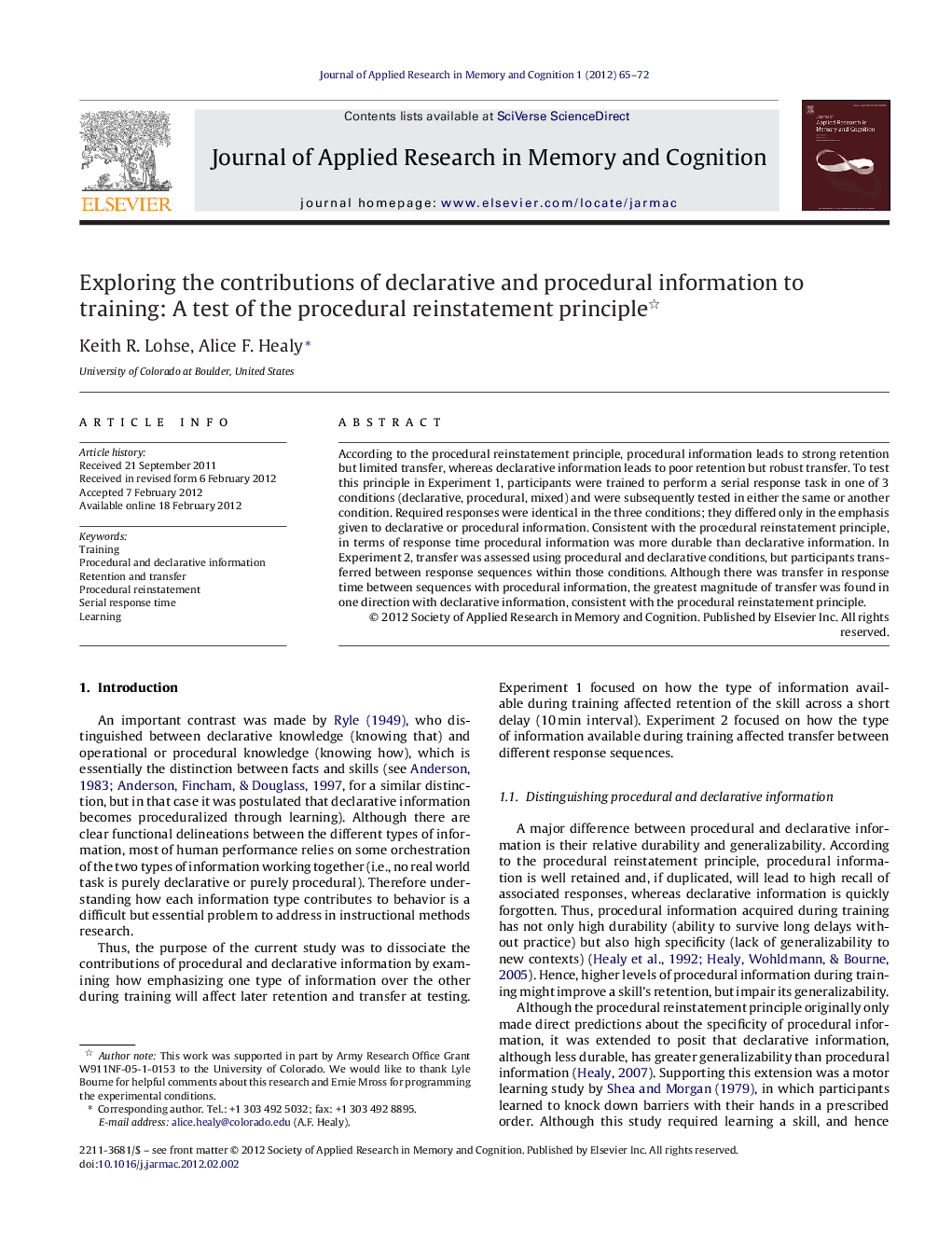| Article ID | Journal | Published Year | Pages | File Type |
|---|---|---|---|---|
| 881653 | Journal of Applied Research in Memory and Cognition | 2012 | 8 Pages |
According to the procedural reinstatement principle, procedural information leads to strong retention but limited transfer, whereas declarative information leads to poor retention but robust transfer. To test this principle in Experiment 1, participants were trained to perform a serial response task in one of 3 conditions (declarative, procedural, mixed) and were subsequently tested in either the same or another condition. Required responses were identical in the three conditions; they differed only in the emphasis given to declarative or procedural information. Consistent with the procedural reinstatement principle, in terms of response time procedural information was more durable than declarative information. In Experiment 2, transfer was assessed using procedural and declarative conditions, but participants transferred between response sequences within those conditions. Although there was transfer in response time between sequences with procedural information, the greatest magnitude of transfer was found in one direction with declarative information, consistent with the procedural reinstatement principle.
► Three conditions differed in emphasis on procedural and declarative information. ► In terms of response time, procedural training was more durable than declarative. ► There was transfer in response time between sequences with procedural training. ► The greatest magnitude of transfer was found with declarative training. ► Declarative information showed less retention but greater transfer than procedural.
